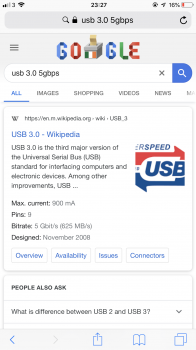Hello guys!
Thank you very much for this amazing forum! I have an iMac (27-inch, Late 2013) with USB 3.0 (link for specs below). I thought that I could install MacOS and Linux on an external and fast SSD. I would avoid to open the iMac, and honestly I was getting impatience because I cannot use modern SSD, and the old blade ssd are more expensive then the recent ones, and I had many limitations anyway. I checked on forums and many people are happy with an OS on external SSD, they found the OS really fast even if on external SSH. I checked the options and I thought I could buy the following:
Enclosure: https://www.amazon.co.uk/USB-NVMe-PCIe-E...
Blade SSD: https://www.amazon.co.uk/gp/product/B07M...
Considering that I have an iMac (27-inch, Late 2013) with USB 3.0: https://support.apple.com/kb/sp688
Do you think this SSD and enclosure are going to work well with it? It's just that I really want to be sure that I'm not buying parts that won't work together or with my iMac, so I need someone more expert's suggestion.
Thank you VERY MUCH for your patience and help.
Regards
Thank you very much for this amazing forum! I have an iMac (27-inch, Late 2013) with USB 3.0 (link for specs below). I thought that I could install MacOS and Linux on an external and fast SSD. I would avoid to open the iMac, and honestly I was getting impatience because I cannot use modern SSD, and the old blade ssd are more expensive then the recent ones, and I had many limitations anyway. I checked on forums and many people are happy with an OS on external SSD, they found the OS really fast even if on external SSH. I checked the options and I thought I could buy the following:
Enclosure: https://www.amazon.co.uk/USB-NVMe-PCIe-E...
Blade SSD: https://www.amazon.co.uk/gp/product/B07M...
Considering that I have an iMac (27-inch, Late 2013) with USB 3.0: https://support.apple.com/kb/sp688
Do you think this SSD and enclosure are going to work well with it? It's just that I really want to be sure that I'm not buying parts that won't work together or with my iMac, so I need someone more expert's suggestion.
Thank you VERY MUCH for your patience and help.
Regards
As an Amazon Associate, MacRumors earns a commission from qualifying purchases made through links in this post.


